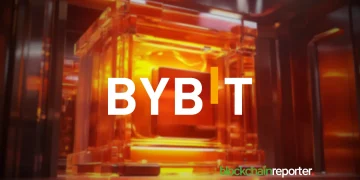In a significant leap towards enhancing the privacy and security of smart contracts on Ethereum and other EVM networks, Fhenix has introduced the concept of Fully Homomorphic Encryption (FHE) Rollups. Fhenix aims to transform the landscape of blockchain technology by enabling the execution of confidential and private transactions without compromising the inherent transparency of the Ethereum network.
Bridging the Gap Between Privacy and Scalability
FHE is an advanced cryptographic technology that allows computations to be performed on encrypted data without the need for decryption. Although the concept of FHE dates back to the late 1970s, recent advancements in computing power have made it feasible for implementation in real-world scenarios. The encryption of data on the blockchain, particularly on the Ethereum Virtual Machine (EVM), holds immense potential for applications involving sensitive data, such as trustless gaming, private voting, and privacy-preserving AI.
Ethereum and other EVM-compatible networks have faced challenges due to their inherent public transparency, limiting their applicability in use cases that require privacy. FHE Rollups present an innovative solution to this issue by allowing developers to build confidential smart contracts using an optimistic rollup structure. This not only ensures scalability but also introduces encryption into applications without the need for extensive changes to existing codebases.
To address scalability limitations, Ethereum has proposed Layer 2 (L2) architectures, with Optimistic Rollups and Zero-Knowledge (ZK) Rollups being the primary contenders. FHE Rollups distinguish themselves by adopting an optimistic rollup approach, offering a balance between scalability and efficiency. Optimistic Rollups assume transactions are valid unless challenged, providing a simpler and more practical implementation compared to the computationally intensive ZK Rollups.
Fhenix’s design approach aims for modularity, separating different components of the blockchain, including Sequencer, Validator, and Data Availability (DA) layers. This separation optimizes the execution of FHE Rollups, allowing for efficient integration with Ethereum’s data settlement and DA components.
The core FHE logic resides in the fheOS library, providing developers with the tools to implement FHE in their smart contracts seamlessly. In addition, Fhenix utilizes the Threshold Services Network (TSN) to enhance functionality, particularly in decrypting data when required. The TSN plays a crucial role in tasks such as announcing voting outcomes, ensuring the secure decryption of data and maintaining confidentiality.
Ushering in a New Era of Confidential Computing
The introduction of FHE Rollups represents a groundbreaking advancement in blockchain technology. Fhenix’s approach allows developers to build Layer 2 solutions with built-in encryption capabilities, positioning them at the forefront of blockchain innovation. The optimistic rollup architecture ensures ease of implementation, enabling developers to leverage Fhenix’s cutting-edge FHE research without the need to learn new programming languages.
As blockchain technology evolves, Fhenix is committed to continuously updating its technical whitepaper to incorporate the latest breakthroughs and technological advancements. The FHE Rollup holds the potential to unlock new Web3 use cases, drive blockchain adoption, and usher in a new era of confidential computing.
For a detailed exploration of Fhenix’s FHE Rollups, the full technical whitepaper can be accessed here.























